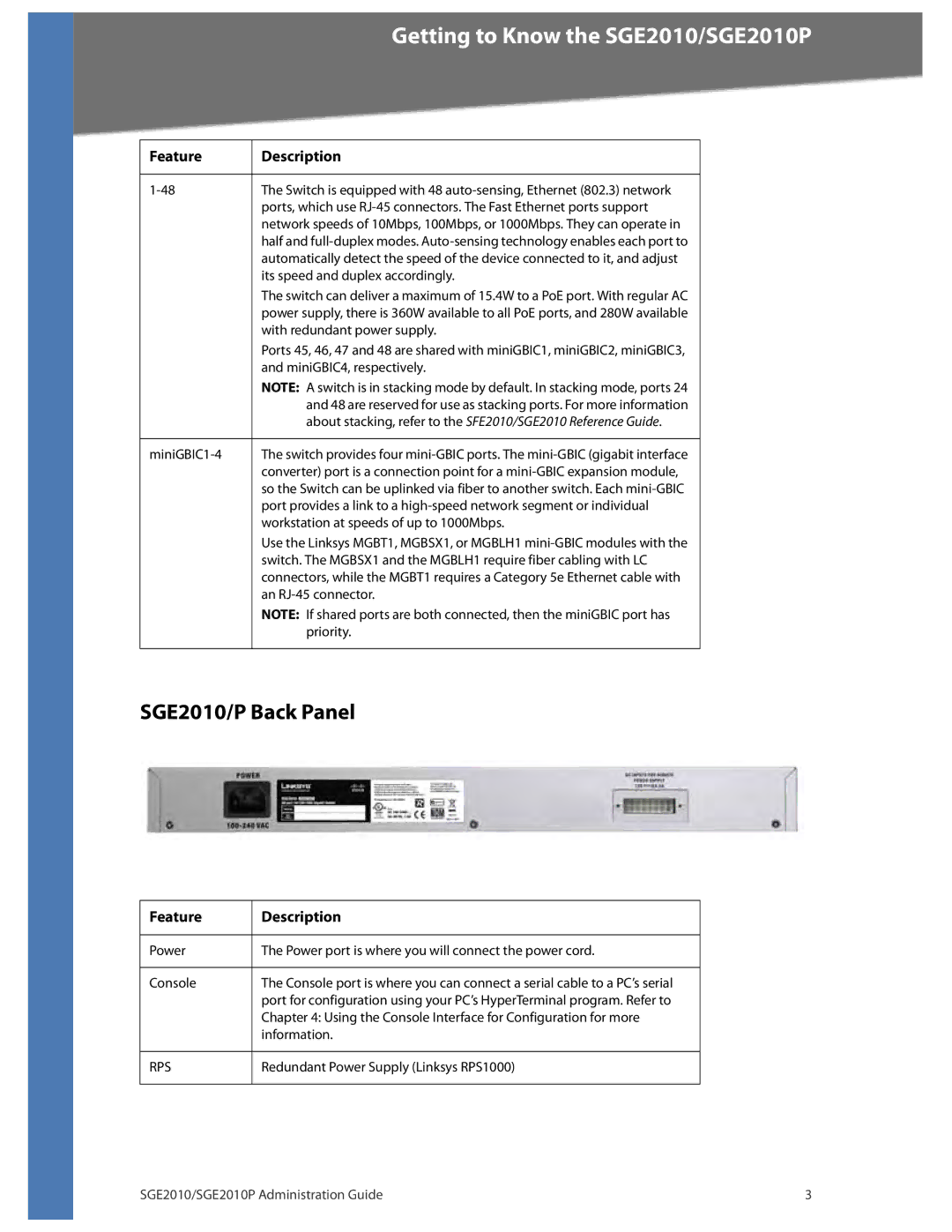
Getting to Know the SGE2010/SGE2010P
Feature | Description |
|
|
The Switch is equipped with 48 | |
| ports, which use |
| network speeds of 10Mbps, 100Mbps, or 1000Mbps. They can operate in |
| half and |
| automatically detect the speed of the device connected to it, and adjust |
| its speed and duplex accordingly. |
| The switch can deliver a maximum of 15.4W to a PoE port. With regular AC |
| power supply, there is 360W available to all PoE ports, and 280W available |
| with redundant power supply. |
| Ports 45, 46, 47 and 48 are shared with miniGBIC1, miniGBIC2, miniGBIC3, |
| and miniGBIC4, respectively. |
| NOTE: A switch is in stacking mode by default. In stacking mode, ports 24 |
| and 48 are reserved for use as stacking ports. For more information |
| about stacking, refer to the SFE2010/SGE2010 Reference Guide. |
|
|
| The switch provides four |
| converter) port is a connection point for a |
| so the Switch can be uplinked via fiber to another switch. Each |
| port provides a link to a |
| workstation at speeds of up to 1000Mbps. |
| Use the Linksys MGBT1, MGBSX1, or MGBLH1 |
| switch. The MGBSX1 and the MGBLH1 require fiber cabling with LC |
| connectors, while the MGBT1 requires a Category 5e Ethernet cable with |
| an |
| NOTE: If shared ports are both connected, then the miniGBIC port has |
| priority. |
|
|
SGE2010/P Back Panel
Feature | Description |
|
|
Power | The Power port is where you will connect the power cord. |
|
|
Console | The Console port is where you can connect a serial cable to a PC’s serial |
| port for configuration using your PC’s HyperTerminal program. Refer to |
| Chapter 4: Using the Console Interface for Configuration for more |
| information. |
RPS
Redundant Power Supply (Linksys RPS1000)
SGE2010/SGE2010P Administration Guide | 3 |
